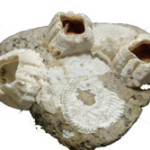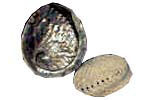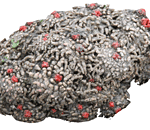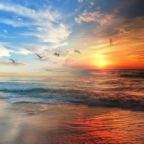
Sea urchins are extremely sensitive to water conditions and are first to show signs of stress, seen when their spines are laid down or are shed. Sea urchins (echinoderms) are a group of marine invertebrates that can be found in almost every major marine habitat from the poles to the equator and from the inter-tidal zone to depths of more than 5,000 metres.
There are around 800 extant species and the group has a long and detailed fossil record stretching back many millions of years. All echinoderms have tube-feet and these play a very important role in feeding and respiration. Echinoids move by means of spines and climb and cling on to hard substrata by means of their tubefeet. The spines also offer the primary means of defence.
Sea urchins are herbivores and feed in a variety of ways. They have a powerful internal jaw and graze on algae or sedentary organisms, thanks to a complex system of teeth called the “lantern of Aristotle”, first described by the Greek philosopher himself, over 2000 years ago. Along with the most dominant edible urchin Erizo, (Loxechinus albus), the Black Sea Urchin (Tetrapygus niger) is the most common of the echinoderms to found on the Chilean coast. It is known to play host to a small crab Liopetrolisthes mitra in a symbiotic relationship.
Warning! Some sea urchins are covered with sharp venom-filled spines that can easily penetrate and break off into the skin – even through a wetsuit. The DAN (Divers Alert Network) website contains useful information on how to handle the unfortunate effects of accidental brushes with these and other poisonous marine organisms. Check out www.diversalertnetwork.org for any information that you need.









Social Profiles